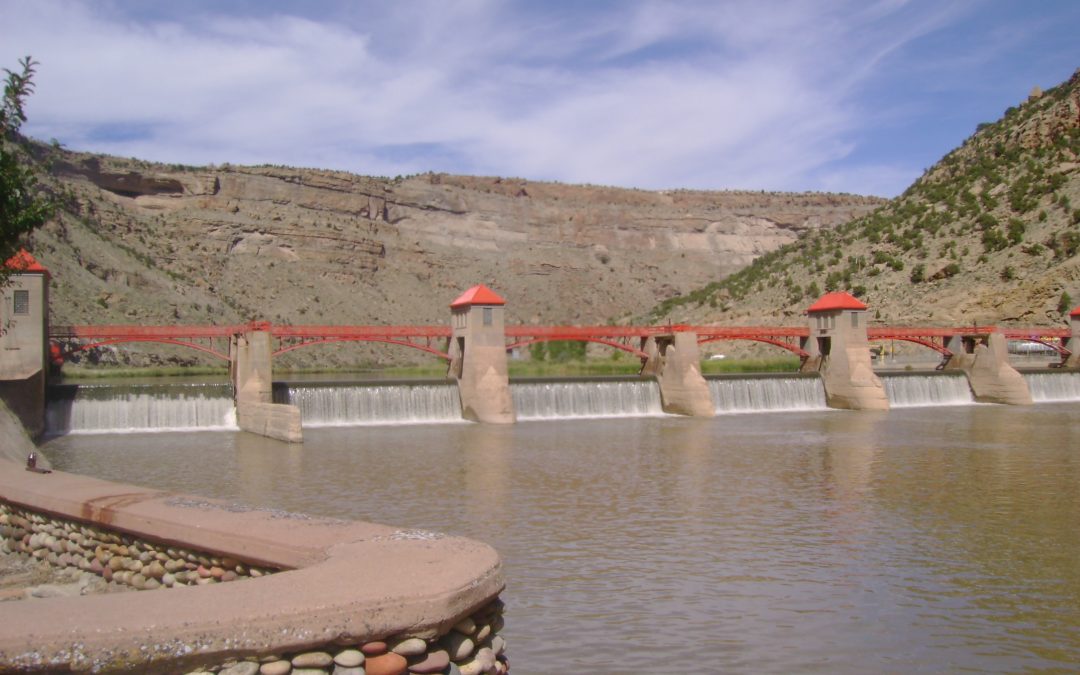A statewide public effort to determine whether Coloradans should engage in perhaps the biggest water conservation program in state history enters its second year of study this summer, but the complex, collaborative effort on the Colorado River has a long way to go before the state and its water users can make a go/no-go decision, officials said.
On Aug. 26, the Colorado Water Conservation Board (CWCB) will hold a virtual public workshop to unveil some of the key findings from the first year’s work, as well as to gather more input on where to go from here. Another meeting is scheduled for Sept. 2 to brief the agency’s board members and discuss next steps. It will also be open to the public.
More than a year ago, Colorado launched the study involving dozens of volunteer ranchers, environmentalists, water district officials, and others to determine if water users should opt to help fill a newly authorized drought pool in Lake Powell. The concept has been dubbed demand management.
Ken Curtis, general manager of the Dolores Water Conservancy District in Cortez, said farmers in his district remain skeptical of the conservation effort primarily because there isn’t enough clarity about how it would work.
“Clearly, one of the themes of our conversations down here has been momentum. There has been a lot of talk but it’s not out there as a policy with well-defined terms that can be read,” he said. “That tells us that we’re nowhere near a demand management program.”
The 500,000 acre-foot pool, approved by Congress last year as part of the historic Colorado River Drought Contingency Plan, would help protect Coloradans if the Colorado River, at some point in the future, hits a crisis point, triggering mandatory cutbacks in the Upper Basin above Lake Powell.
But finding ways to set aside that much water, the equivalent of what roughly 1 million average Colorado households use in a year, is a complex proposition. Although the concept is still evolving, most agree the voluntary program, if created, would need to pay water users who agree to participate. And it would mean farmers fallowing fields in order to send their water downstream and cities convincing their customers to do with less water in order to do the same.
The Colorado River Basin includes seven U.S. states, Mexico, and more than two dozen sovereign tribal nations. Colorado, Utah, Wyoming and New Mexico comprise the Upper Basin, while Arizona, California and Nevada make up the Lower Basin before the river crosses the U.S.-Mexican border.
The drought pool would belong to Colorado, Utah, Wyoming and New Mexico. Each of those states is examining whether filling it is doable and desirable.
In Colorado, eight demand management work groups involving dozens of volunteers and experts on such issues as agriculture, economics, stream health, and water law met throughout the past year. Among the overarching conclusions to date, based on a report issued in July, is the need for equity between rural and urban communities, the need to analyze environmental impacts and benefits, and the need for a multi-pronged approach to funding such a program, which could include taxes, water-user fees, and cash from the federal government. The CWCB is funding and facilitating the process.
“This has never been done before,” said Russell George, a former Colorado Speaker of the House who helped create the state’s hallmark system of local water governance, where each of its eight river basins, as well as the Denver metro area, is represented by a public roundtable.
“What we’re doing is writing the textbook from whole cloth,” he said.
Bart Miller is healthy rivers program director at Western Resource Advocates, which has participated in the work groups. Miller said the first year of work was noteworthy because no one was able to identify “a fatal flaw. No one came up with a reason this can’t be done,” he said.
Despite the pandemic and deep state budget cuts, the CWCB has enough funding to move forward with another year of work, according to Amy Ostdiek, deputy chief of the Federal, Interstate and Water Information Section at the CWCB. The agency spent nearly $268,000 in the last fiscal year, which ended June 30, and has set aside another $396,000 for the current year.
George said the work done to date represents only the beginning of the collaborative search for a statewide drought protection plan on the Colorado River.
“When we started this, we didn’t want to foretell the answer to the question, ‘What does the end look like?’ I don’t think we’re ready to say yet. This is still the beginning,” George said.
Jerd Smith is editor of Fresh Water News. She can be reached at 720-398-6474, via email at jerd@wateredco.org or @jerd_smith.
Fresh Water News is an independent, nonpartisan news initiative of Water Education Colorado. WEco is funded by multiple donors. Our editorial policy and donor list can be viewed at wateredco.org


 Print
Print